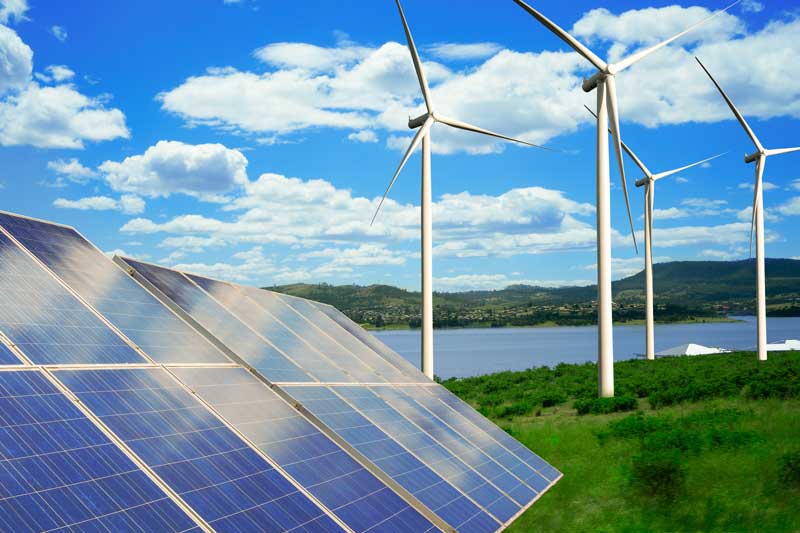Storms, outages, and aging equipment are some of the many reasons the United States power grid is less reliable than it was as recently as five years ago.
Weather accounts for 25% of all power grid failures and will continue to get worse.
“Climate change is expected to continue to challenge electric reliability,” Fitch analyst Barbara Chapman said in a release.
According to a Wall Street Journal review of federal data, significant, sustained outages are happening more frequently in the U.S. over the past two decades. In 2000, the data showed less than two dozen significant disruptions. In 2020, that number surpassed 180.
Across the country, utility customers experienced an average of more than 8 hours of power interruptions in 2020, more than double the amount in 2013, when the government began tracking outage lengths, according to the Wall Street Journal.
The increasing pressure on the grid, from charging electric vehicles to omnipresent items like computers, tablets, and smartphones, is leaving customers in the dark.

Trouble in Texas
Even states with traditionally predictable climates are facing massive crises. For example, a gigantic winter storm knocked out power for 40% of Texans in 2021. Texas’ power grid, which is unique in that it is state-run, is expected to see a power shortfall of 37% in extreme conditions, the North American Electric Reliability Corp. (NERC) said in a report at the end of 2021.
“The industry has done a tremendous amount of what they can, but there is still work to be done to make sure they are resilient to these weather patterns. It’s going to take more than one year to build that,” John Moura, director of reliability assessment and performance analysis at NERC, said in a media briefing in November.
The transformation of the grid
At the same time the pressure on the grid is increasing, it is undergoing the most extensive transformation in its history.
Utilities are no longer the dominant electricity producers, and suppliers compete to build power plants and sell their output at the lowest price to regional markets.
Natural gas-fired plants have replaced pricier coal-fired and nuclear generators within the past decade, primarily due to fracking unlocking cheap gas supplies.
The prices of wind and solar technologies have become more cost-competitive and now rival traditional electricity supplies.
The push for renewable energy sources is growing among customers, politicians, and regulators.
In the coming decades, many states are building more clean energy projects to meet mandates to eliminate carbon emissions from the grid. The Biden administration has set a goal to do so by 2035.
However, going green can cause issues too.
“Everything is tied to having electricity, and yet we’re not focusing on the reliability of the grid. That’s absurd, and that’s frightening,” Curt Morgan, CEO of Vistra Corp., told The Wall Street Journal. “There’s such an emotional drive to get where we want to get on climate change, which I understand, but we can’t throw out the idea of having a reliable grid.”
Morgan’s concern is that the traditional energy plants will need to be retired before reliable replacements such as wind, solar, and battery storage come online, “given the cost and challenge of quickly building enough batteries to have meaningful supply reserves.”
How to fix the grid for the future
The proper transformation of the grid to a clean-energy future won’t be cheap or easy, and it needs to happen methodically.
Clean energy plants need batteries and reserves, but building these projects often gets stalled due to funding.
Wind and solar projects produce energy based on the weather, and with the weather continuing to evolve and change across the country, that isn’t reliable on its own. For example, in Texas, clean energy makes up 42% of the state’s electricity generation during some months, but the grid has become far more challenging to manage.
“Grid operators must predict how much power wind turbines and solar panels will generate based on weather forecasts, which is relatively easy for tomorrow, but not three weeks in advance,” according to the Houston Chronicle.
“The power market needs to do two things. It needs to provide power today, but it also needs to plan years ahead. And that’s where the Texas market fails,” Eric Fell, who studies power and gas markets for the research firm Wood Mackenzie, told The Houston Chronicle. “ERCOT has skated by for years with several close calls where we avoided blackouts because the weather wasn’t quite so crazy.”
- 87% of Utilities Have Experienced at Least One Data Breach in Last Three Years - February 5, 2024
- Can Drones Lower Your Next Utility Bill? - January 10, 2024
- Onshore Wind Farms Are The Next Big Thing In Renewable Energy - December 6, 2023





